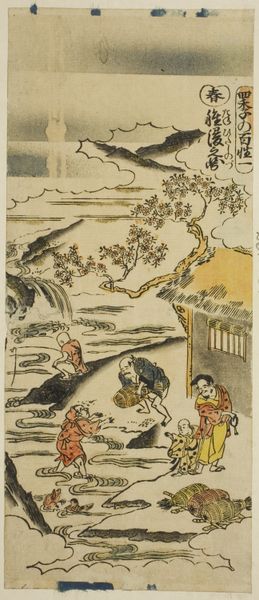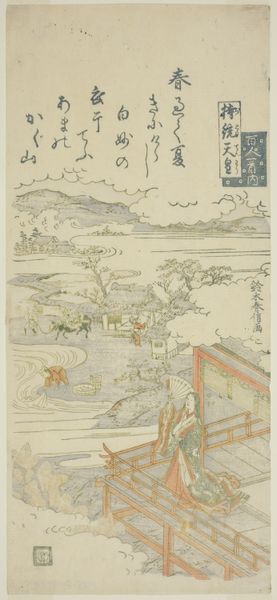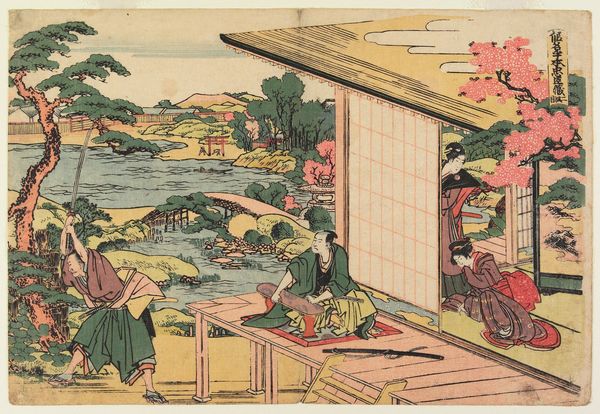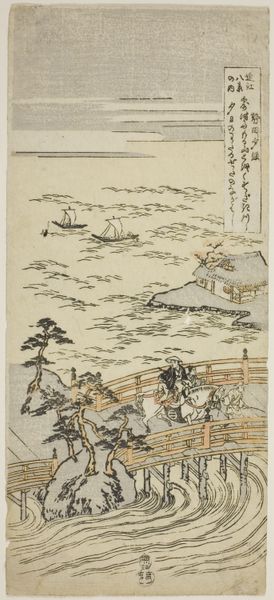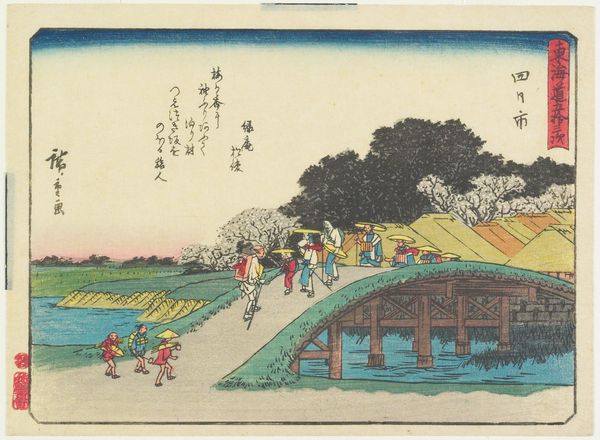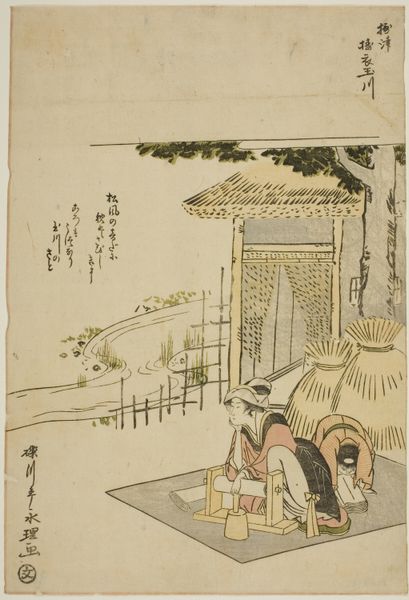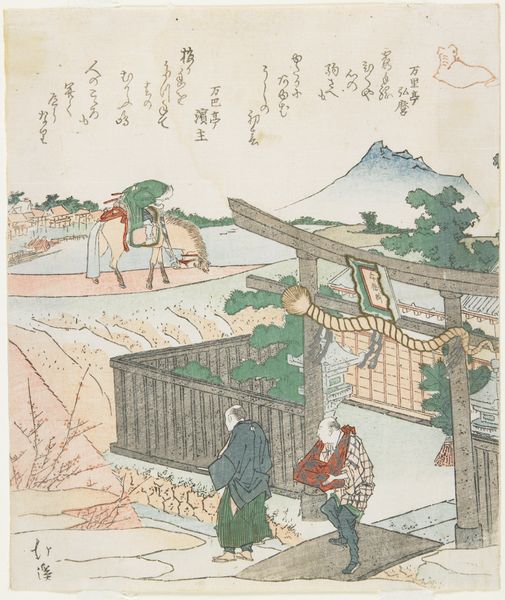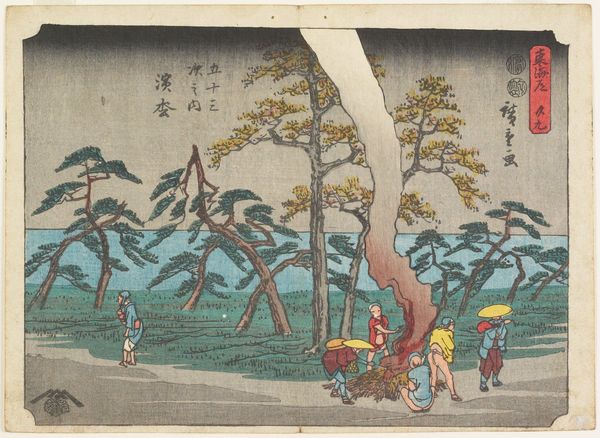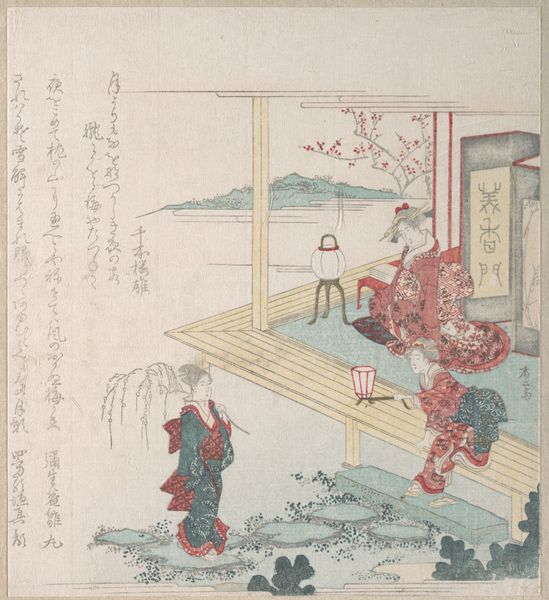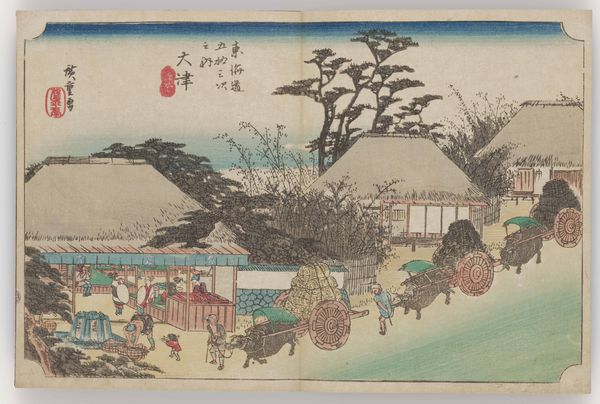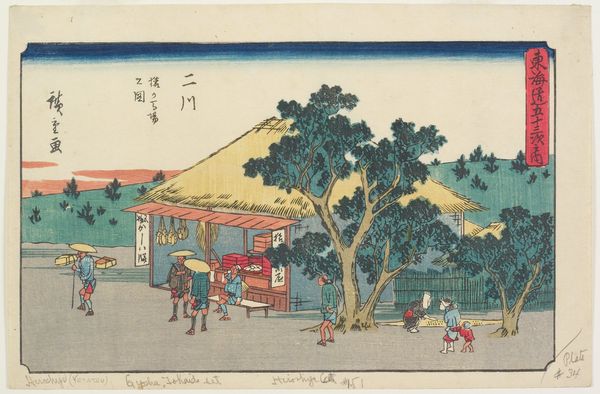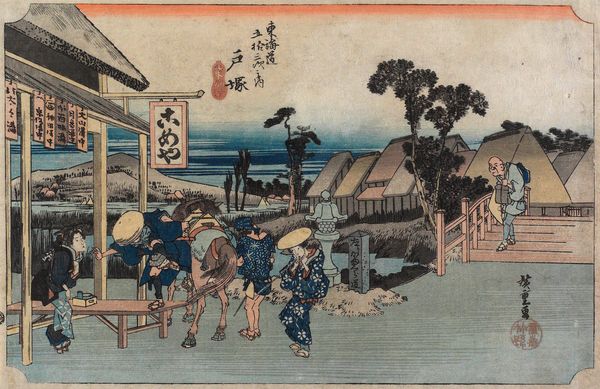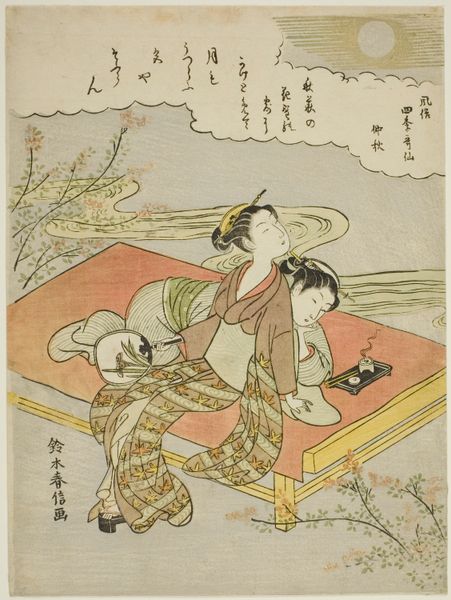
Kogo no Tsubone and Minamoto no Nakakuni c. early 1760s
0:00
0:00
print, woodblock-print
#
portrait
# print
#
asian-art
#
sketch book
#
landscape
#
ukiyo-e
#
figuration
#
woodblock-print
#
genre-painting
Dimensions: 30.7 × 27.4 cm (12 1/8 × 10 3/4 in.)
Copyright: Public Domain
Editor: This woodblock print, "Kogo no Tsubone and Minamoto no Nakakuni," was created by Suzuki Harunobu around the early 1760s. I'm really drawn to the contrasting elements; the tranquil interior versus the action on the road outside. What formal elements strike you most prominently in this work? Curator: I find the print exceptionally interesting due to its strategic employment of perspective. Note the compressed foreground that leads into a subtly suggested recession, creating an intimate yet expansive composition within a rather shallow plane. The deliberate use of line—observe how it defines not only the figures and architectural structures but also implies atmospheric perspective. Notice, too, how areas of solid pigment—the yellow curtains, the rider's robe—punctuate the delicate, almost ephemeral quality of the overall scene. What function does the textual inscription perform? Editor: I’m curious, is it typical in ukiyo-e prints to have this sort of calligraphic text incorporated directly into the scene? I guess it functions similarly to the narrative elements that other artworks employ. Curator: Precisely. In this instance, it acts as both visual texture and paratext, enhancing our understanding by intertwining with the figures. Consider, as well, the visual rhythm established by the repeated vertical lines—the fence, the architectural supports—against the flowing robes and curvilinear forms of the landscape. How might we interpret that rhythm? Editor: Maybe that shows the tension between domestic and public life? Or even natural versus built spaces, too? I didn’t pick up on how strongly that defined the print until now. Thank you. Curator: An astute observation, and it provides us with a formalist grounding. The beauty of art lies not in the absolute explanation, but its structural ability to engage one's perception.
Comments
No comments
Be the first to comment and join the conversation on the ultimate creative platform.
